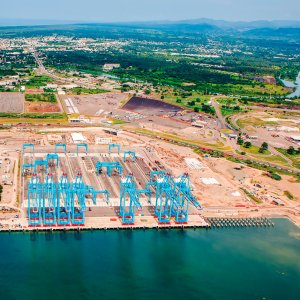Changes Needed for Appropriate Social Housing
STORY INLINE POST
Mexico is facing a substantial housing deficit and José Macías, Construction Manager of Maza Servicios believes this is due to the industry’s failure to meet the housing objectives established by federal administrations. “We have the needed institutions and mechanisms, such as INFONAVIT, to provide houses for the country’s inhabitants but we now need more resources,” he says. The main stumbling block, according to Macías, has been lack of funding. “Among the factors that have had a negative impact on the industry are low oil prices," he says. “We need to have an economic system that does not depend on oil prices.”
This administration’s densification policy for social housing has transformed the way it is constructed with a greater focus on the inner part of Mexico City, says Macías. Instead of small houses, developments now include vertical housing. “We look for ways of constructing these vertical compounds in strategic zones that allow habitants access to public services,” he says. “We achieve this through the densification policy established by the federal administration.” Many construction companies faced financial difficulties in the aftermath of the 2008 crisis and Maza Servicios is implementing a series of strategies to make sure it does not go through the same thing. “We observe the market and analyze the housing needs of different cities so we can conduct a proper evaluation of the practicality and profitability of investing in a particular city,” he says.
In the aftermath of the 2008 housing crisis, Mexico’s GDP contracted by 8 percent, according to OECD figures. By 3Q09, unemployment reached 5.8 percent, up from 3.2 percent in 2007, and by December 2008, the Mexican currency reached 14 pesos to the dollar compared to the 2008 average of 11.2 pesos. In the first months of 2009, Banco de México, the central bank, was forced to use almost US$20 billion in an attempt to inject liquidity into the market and avoid a hike in interest rates. Due to the fact that the infrastructure sector relies greatly on public funding, a shrinking of the available budget meant a significant step backward for the industry.
In almost 90 percent of the cities in Mexico, it is common to find problems with basic infrastructure such as the supply of water and electricity in the construction of vertical housing. Because cities do not tend to have a long- term growth plan, when they have to expand they do it without order and structure, says Macías, although there are examples of change. “We have seen that certain cities such as Aguascalientes, Merida, Queretaro and Monterrey now have a 20-year growth plan,” he says. “Since they know the direction the expansion is going to take, they begin the construction of highways and roads beforehand. In these cases, we have also seen that local authorities commission the construction of industrial parks to ensure employment sources and begin with the construction of public schools and public parks.” In this way, when the time comes for housing developers to begin the construction, it is easier and cheaper since there already is an existing infrastructure.
Still, the country has a long way before it can achieve sustainable housing. “We are seeing the industry attempt to construct sustainable housing but we lack the necessary technology and this means we are going in the wrong direction,” Macías says. “But the main challenge of the eco- friendly construction industry is the lack of incentives to do this kind of building.”
To advance sustainability, some INFONAVIT programs assign more money to housing construction if it meets certain standards of carbon emissions. Although he recognizes the goal of this initiative, Macías says it is not enough. “Maza Servicios has contributed to the construction of houses with technologies that do not function as well as they should because the homeowners do not correctly use these new technologic appliances,” he says. “Also, the maintenance costs of these appliances tend to be elevated and often owners are not willing to pay for it.”






















